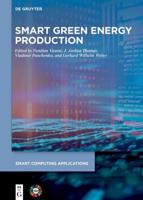Publisher's Synopsis
In the past several years, it has become apparent that computing will soon achieve a status within science and engineering to the classical scientific methods of laboratory experiment and theoretical analysis. The foremost tools of state-of-the-art computing applications are supercomputers, which are simply the fastest and biggest computers available at any given time. Supercomputers and supercomputing go hand-in-hand in pacing the development of scientific and engineering applications of computing. Experience has shown that supercomputers improve in speed and capability by roughly a factor 1000 every 20 years. Supercomputers today include the Cray XMP and Cray-2, manufactured by Cray Research, Inc., the Cyber 205, manufactured by Control Data Corporation, the Fujitsu VP, manufactured by Fujitsu, Ltd., the Hitachi SA-810/20, manufactured by Hitachi, Ltd., and the NEC SX, manufactured by NEC, Inc. The fastest of these computers are nearly three orders-of-magnitude faster than the fastest computers available in the mid-1960s, like the Control Data CDC 6600. While the world-wide market for supercomputers today is only about 50 units per year, it is expected to grow rapidly over the next several years to about 200 units per year.










